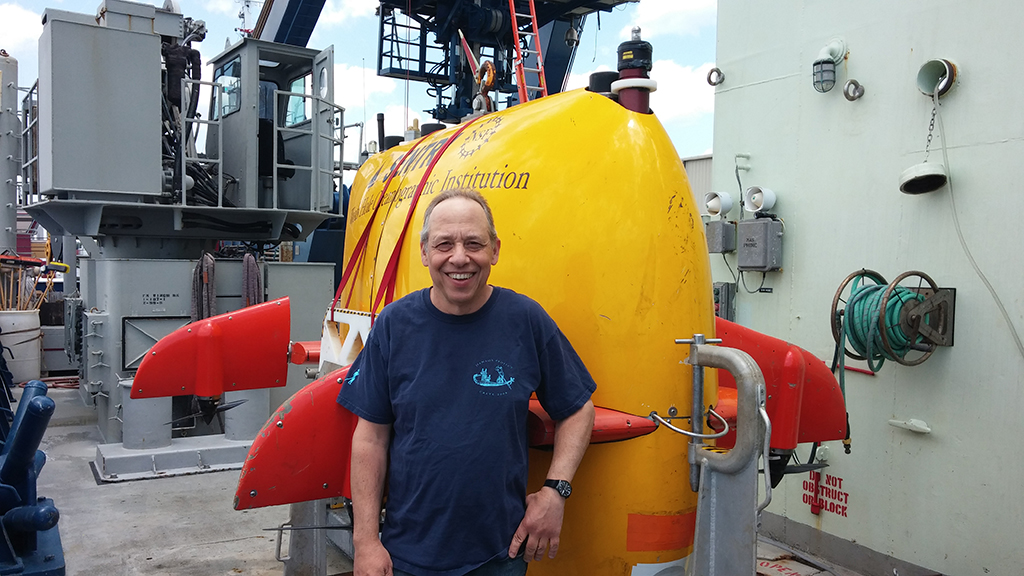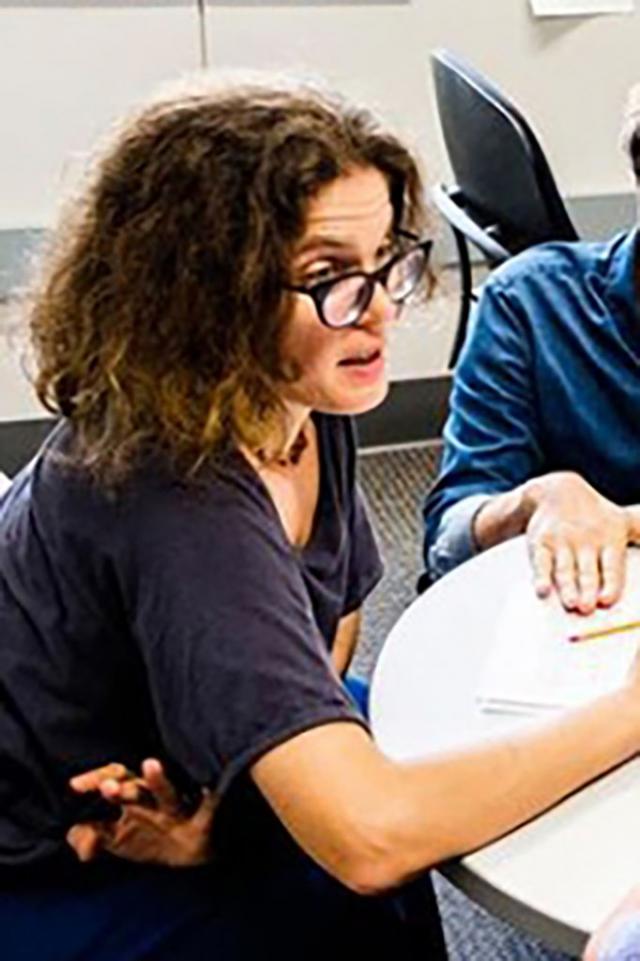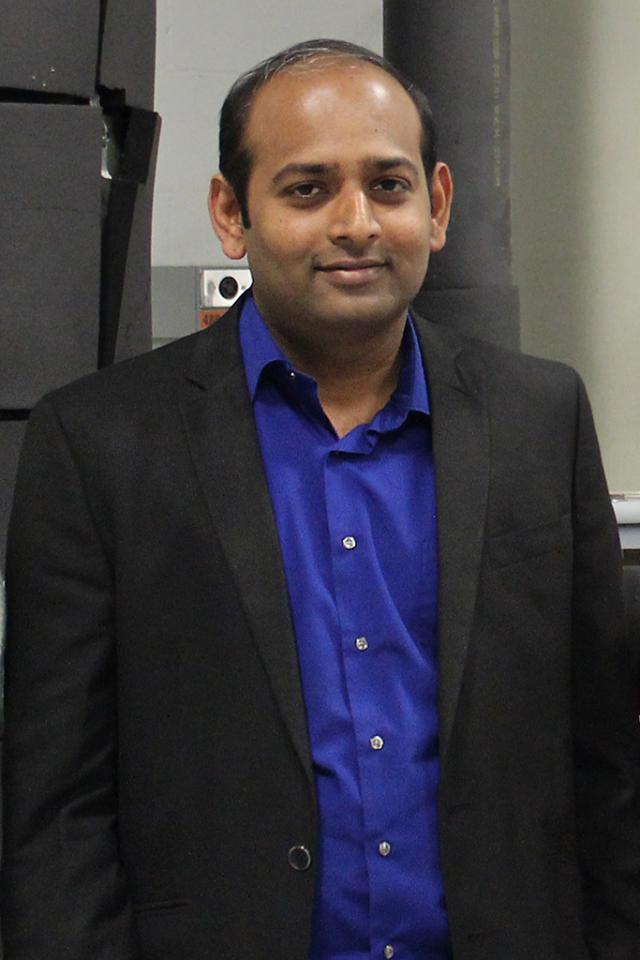Dana Yoerger
Everything he’d learned up until that point, every study he’d conducted, every time out at sea, had led him to this day.
“The night before we got there,” says Dr. Dana Yoerger (SB ‘77, SM ‘79, PhD ’83), senior scientist at the Woods Hole Oceanographic Institution (WHOI), “we could see the sky glowing red from the flares’ flames. I’ll never forget that feeling. I thought, ‘We’ve got all the right equipment, we’ve got all the right people, we’re on a good ship; I’m not sure how this is going to turn out, but everything we’ve done has been leading us to this point.’”
It was the notorious 2010 Deepwater Horizon oil spill, and Dana Yoerger and the SENTRY team had come in to do detailed mapping of the deep plume.
“The oil was still flowing,” he continues. “The next day we drove right into the middle of the exclusion zone because we were dropping off some team members to sample the flow. We drove right into the middle of it. There were more than 50 ships and helicopters, flames were shooting out. It was unbelievable.”
Yoerger and his team showed that it was indeed a deep plume and that it originated from a wellhead that was at 1,100 meters. They utilized an AUV, SENTRY, equipped with a mass spectrometer, to gather and transmit a limited subset of data that gave them the information they needed to drop samplers into the water at the right locations. From there, they characterized the plume and calculated its chemical flux, as well as determined which directions the currents were taking it.
As an MIT student, Yoerger studied under Professor Tom Sheridan, who was researching human-machine interactions.
“One of Tom’s strengths was being able to see all of the possibilities for human-machine interactions – not just falling into some obvious kind of configuration but contemplating all of the possibilities for it. He wanted to consider the dimensional space of who is in charge. And we think about all of those things all of the time now. It’s not just that the automation is working and people are directing it – there’s a lot of richness to it now, and the trick is to put those pieces together in the best possible way.”
One day during his job hunt, he got a call from his advisor saying a guest was coming in. Dr. Yoerger was intrigued, and went to meet him. After 20 minutes with the guest, he looked at the clock and thought to himself, “I think I know what I want to do with my life.” The guest was award-winning oceanographer Professor Robert Ballard, who would later discover wreckage from the Titanic.
“Sometimes I think to myself,” muses Yoerger, “what if I had slept in that day?
“I don’t think I would have had the same kind of success elsewhere as I have had at WHOI. It turned out to be a great match to my skills and abilities. I like going to sea and solving problems at sea by producing engineering and scientific results.”
Yoerger, in addition to being a major part of the team that identified the Deepwater Horizon oil spill characteristics and tendencies, has also been a key contributor to major AUV research throughout the past few decades. He was part of the research team for the remotely operated vehicle JASON; the Autonomous Benthic Explorer known as ABE; the hybrid remotely operated vehicle NEREUS, which reached the bottom of the Mariana Trench in 2009; and most recently the autonomous underwater vehicle SENTRY. He has gone to sea on more than 70 oceanographic expeditions exploring the Mid-Ocean Ridge, mapping underwater seamounts and volcanoes, and surveying ancient and modern shipwrecks.
Today, Yoerger spends more of his time onshore, setting up the Center for Marine Robotics at WHOI to support the proliferation of robotics in ocean science and engineering. As an educator, Dr. Yoerger also supervises the research and academic program of graduate students studying oceanographic engineering through the MIT/WHOI Joint Program in the areas of control, robotics, and design.
He’s also the 2009 recipient of the Lockheed Award for Ocean Science and Engineering.
“To deliver the kind of operational product that we need, you’ve got to push boundaries,” he says. “But there’s also a strong element of engineering involved. If you work at Woods Hole, there’s no point in just generating engineering theory that can’t be implemented at some point. Even the researchers that are typically highly theoretical in signal-processing or acoustic communication, for example, are tied to people who allow them to execute experiments and verify those theories with practice.”




